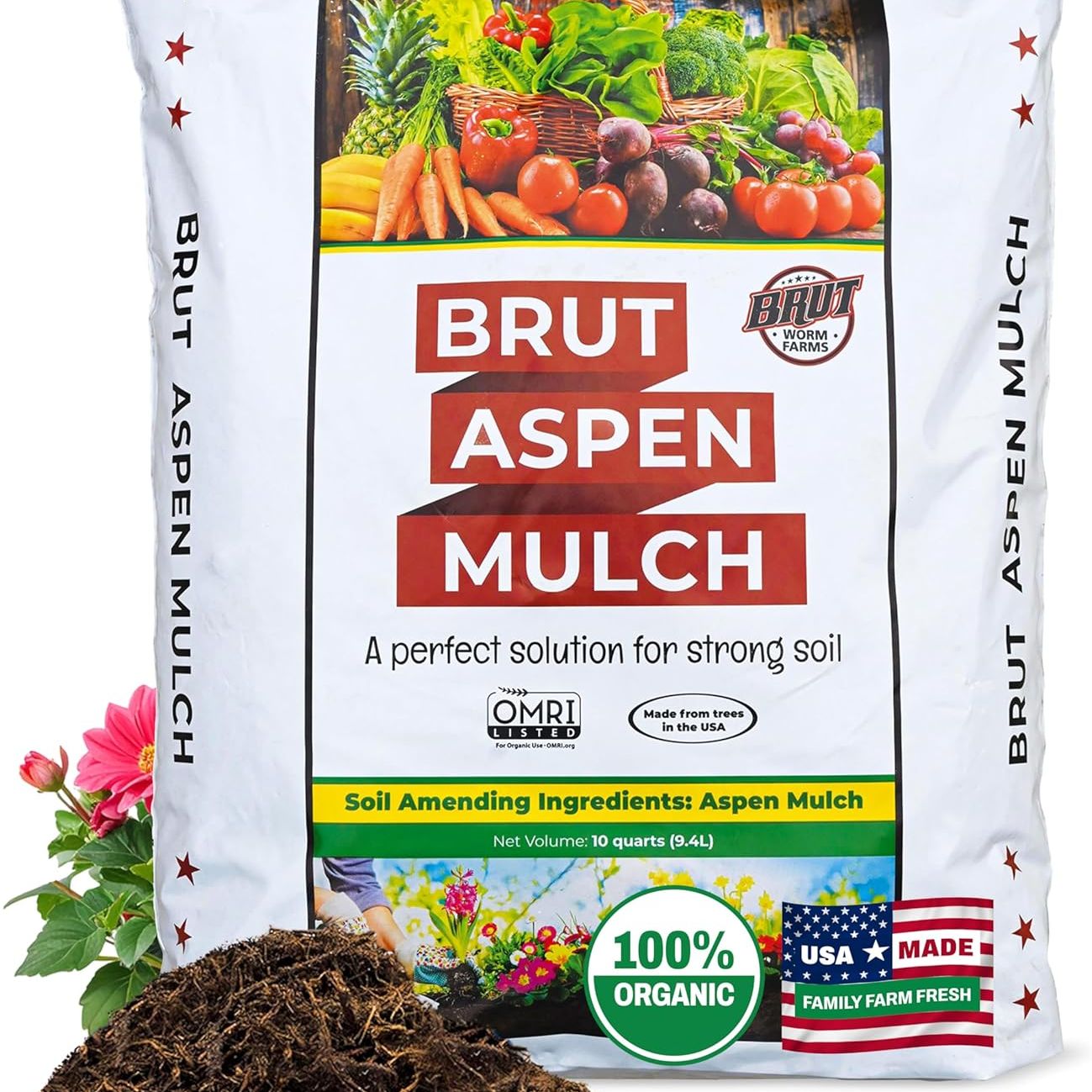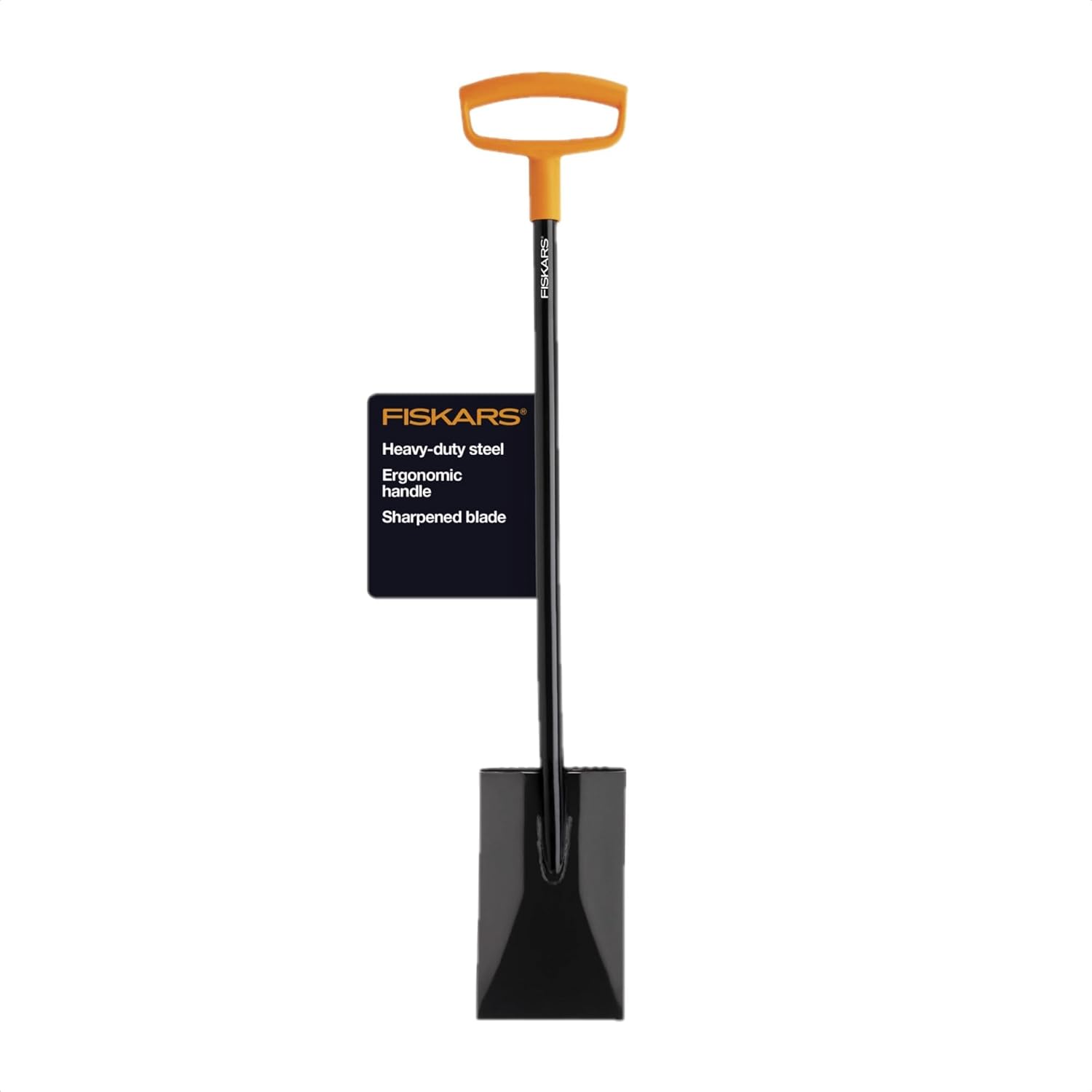Plant This Berried Beauty for Fall Color, Wildlife and to Purify the Air – Cotoneaster is the Shrub You Didn't Know You Needed, Until Now
Cotoneaster will give you spring blossom and bright fall berries – our guide explains all the tips you need for success


Sparkling fall color from foliage, fruits, or both, is the main attraction of cotoneaster – a varied group shrubs and trees loved for their bold berries. Most are deciduous, although some of the most widely planted are evergreen shrubs, and there are two obvious features they all have in common.
First, there are the small, five-petaled, mainly white flowers that open in late spring or early summer and which are exceptionally popular with bees. These are followed by clusters of showy berries, usually in red, though also in orange or occasionally yellow. They are one of the best shrubs for fall berries.
Cotoneasters may be confused with pyracanthas and hawthorns (Crataegus) but they are distinct in having no thorns. They are mainly robust and adaptable, thriving in many soils and situations. The foliage is also known to help absorb pollution from car exhausts and purify the air around us better than most trees, making them a fantastic tree for a front yard.

These shrubs dazzle with their vibrant berries
Cotoneaster key facts
- Plant type: Deciduous and evergreen shrubs or small trees
- Mature size: 2-15ft (60cm-4.5m)
- Soil type: Any well-drained soil
- Soil pH: Slightly acid, neutral or slightly alkaline
- Time to plant: Spring or fall
- Flowering time: Early summer
- Flower color: White, sometimes pinkish
- Hardiness zones: USDA zones 2-7
- Scientific name: Cotoneaster
- Common name: Cotoneaster
The four main types of cotoneaster

C. atropurpureus covers a bare wall
The most obvious distinctions are between large and small cotoneasters, and between evergreen and deciduous types.
The taller species from their beauty in fruit, grace of habit, and vigorous constitution, are admirable constituents of the tall shrubbery, but they are still better as isolated specimens on the lawn.
The smaller species make useful and handsome coverings for sloping, sunny banks, and the smallest of all are very well adapted as rockery plants.
The birds appreciate the berries on these shrubs as much as we do, but often feed on other berries first, lengthening the garden display. Flowers and berries may come in twos or threes, but the most attractive cotoneasters have heads 2-3in across with around a hundred flowers and then berries.
Design expertise in your inbox – from inspiring decorating ideas and beautiful celebrity homes to practical gardening advice and shopping round-ups.
- Large cotoneasters: With a single trunk or with multiple stems, tall types make impressive specimens in lawns or at the back of mixed borders.
- Small cotoneasters: Lower growing kinds either spread more or less horizontally or make rounded bushes.
- Deciduous: Many deciduous cotoneasters develop fiery fall foliage and a few reveal a striking herringbone branch structure when the leaves fall.
- Evergreen: The foliage of evergreen cotoneasters varies from bold and glossy to neat and dull and can be as much as 6in (15cm) long. In colder areas, some of the leaves may drop in fall.
How to use cotoneaster in your backyard

Weed-suppressing ‘Streib’s Findling’
- Hedging plants: Cotoneaster franchetii is evergreen or deciduous, depending on the climate, and has orange berries and sage-green leaves.
- Border plants: The white-edged foliage of Cotoneaster atropurpureus ‘Variegatus’, sometimes sold as 'Northern Borders', develops pink tones in fall along with rows of scarlet berries.
- Specimen: Cotoneaster ‘Cornubia’ is a tall, elegant evergreen shrub or small tree with spectacular clusters of red berries.
- Wall shrubs: Allowed to fan out over a wall or fence, the herringbone branches and red berries of Cotoneaster atropurpureus stand out well.
- In the rock garden: The prostrate stems of Cotoneaster dammeri, with their sparkling red berries, spread out widely and turn down from raised beds.
- Ground cover plants: The tight, dark, prostrate growth of red-berried Cotoneaster ‘Streib’s Findling’ smothers weeds well.
You can find several varieties of cotoneaster available to order from Nature Hills. You can also find Cotoneaster 'autumn inferno' shrubs from Home Depot, with the most wonderful fiery red berries.
How to plant cotoneasters
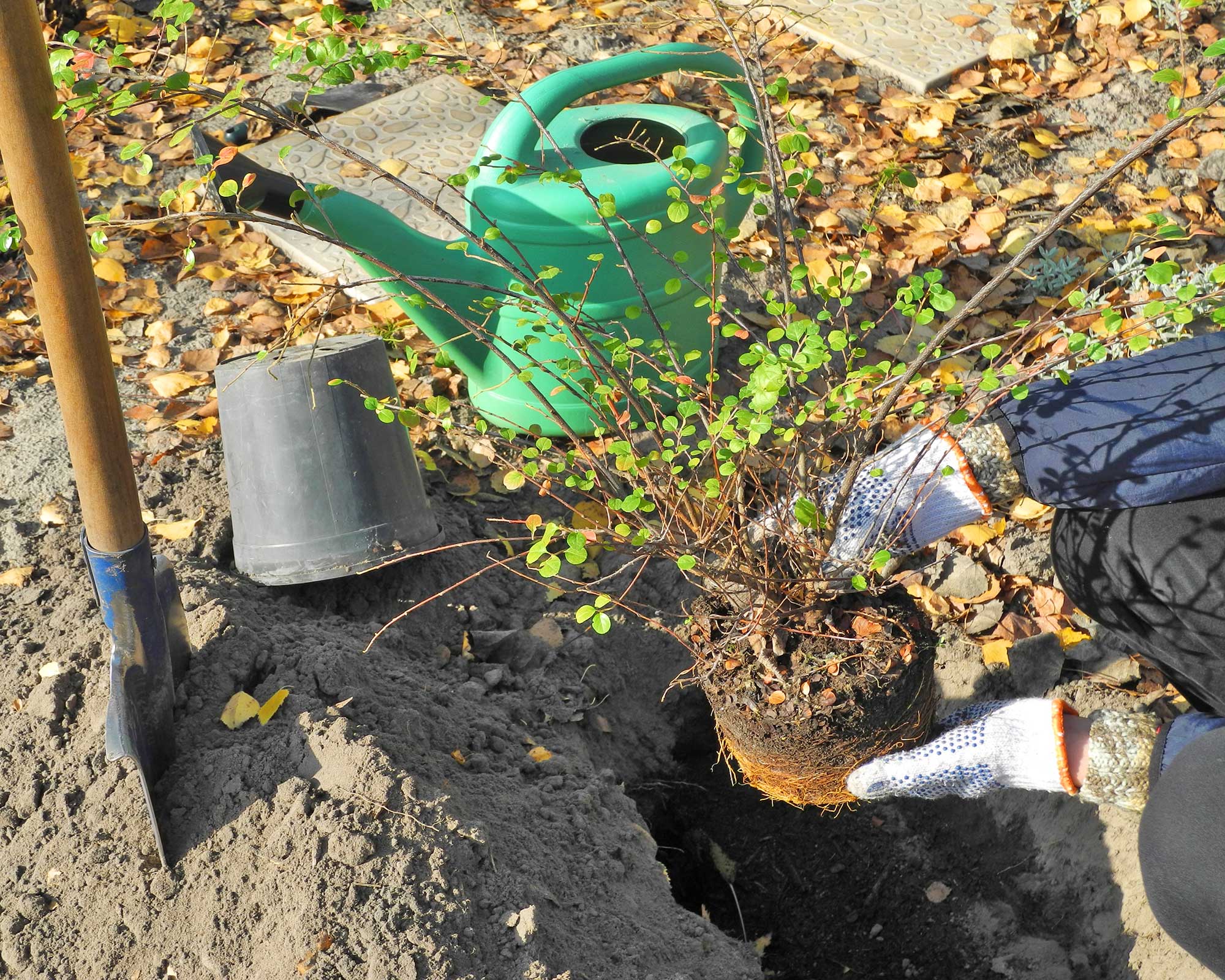
Plant your cotoneaster ideally in full sun
Cotoneasters are best in full sun, although some, especially ground cover types, are happy in light shade.
They grow very well in fertile, well-drained conditions but will also thrive in poor soil, gravelly sites and heavy clay soil, especially if the planting site is amended with garden compost or other organic matter.
No special planting techniques are required; plant in the same way as other garden shrubs. Staking is not usually necessary.
Do not allow newly-planted cotoneasters to dry out, the roots of evergreen types in particular can become dry in windy conditions and will be slow to recover. Mulch immediately after planting to retain moisture and prevent weed growth and keep them well watered in their first year.
How to care for cotoneasters

Many cotoneasters make useful short and spreading border and wall shrubs, with flowers loved by bees, berries and often autumn colour, as found in C. atropurpureus ‘Variegatus’
Cotoneasters are resilient, low-maintenance shrubs, usually developing into attractive plants despite a lack of care and attention which might cause other shrubs to struggle.
However, if growth is slow, then a fall application of rose fertilizer (available on Amazon) will help, followed by a mulch of weed-free organic matter to help retain moisture and prevent the development of weeds.
Cotoneasters have a habit of developing into well-shaped plants without any pruning, shaping or trimming, although if a branch grows especially strongly and spoils the shape it can be cut back after flowering.
Old and straggly specimens can be cut back hard, if necessary, in spring and will quickly regrow. But, be sure the plant never dries out in its first months after treatment.
Cotoneasters grown as hedges should not be trimmed into a formal shape, but allowed to grow more naturally. Cut back the longest growths after flowering to keep it to the size you require.
How to propagate and make more cotoneasters
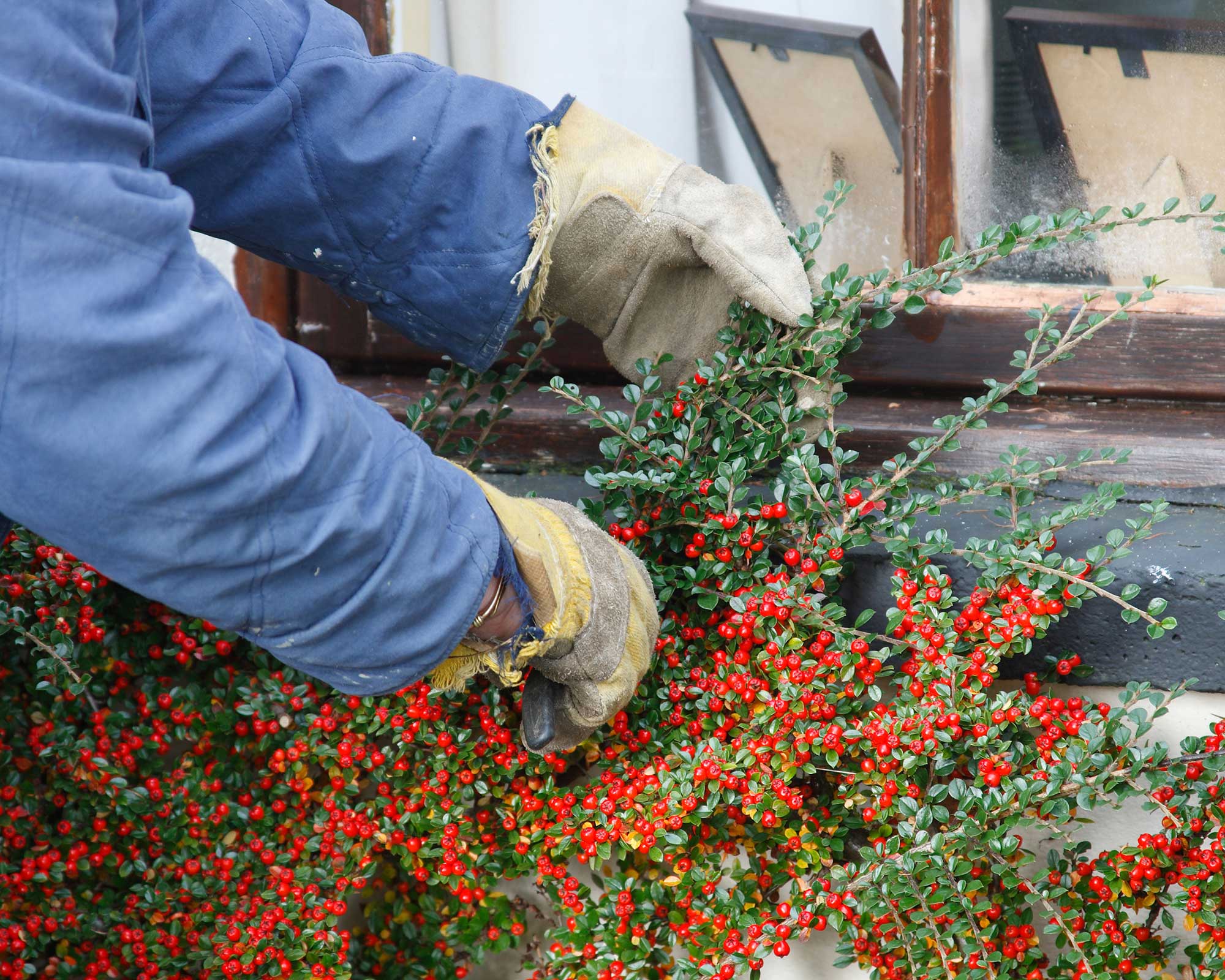
Cotoneasters may be trimmed just to keep them within their bounds
There are three ways to make more cotoneasters: seeds, layering and taking cuttings from plants.
Each cotoneaster berry contains up to five seeds, and these are spread by birds. So seedlings often pop up around the garden, and these can be dug up when they are about 6in (15cm) high and transplanted to grow on.
After two or three years, they can be moved to a permanent position. The problem with growing cotoneasters from seed is that the new plants do not always resemble the plants from which the seeds came.
Any cotoneasters with low branches can be layered. That is, low or prostrate stems can be laid on the ground then a stone or brick placed to keep the stem in contact with the soil. Roots will usually develop and the rooted part can be cut off and replanted elsewhere.
Cotoneasters can also be rooted from 6in (15cm) cuttings taken in early or midsummer. But, without specialist equipment, few will usually take.
Common problems with cotoneaster
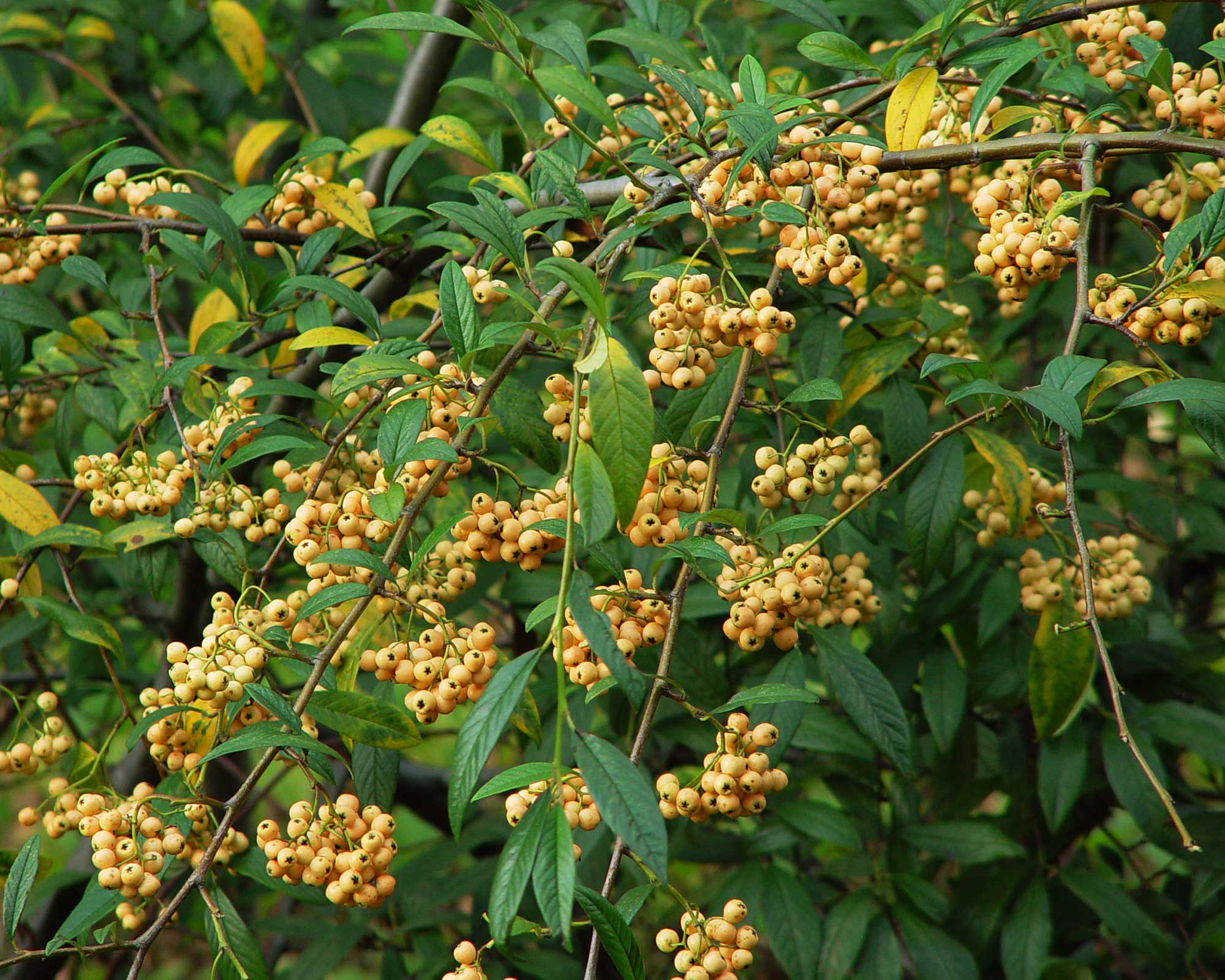
Fast-growing ‘Rothschildianus’ makes a 5m (26ft) semi-evergreen shrub
The main problem that afflicts cotoneasters is fireblight, a bacterial disease that occurs naturally in North America but which has now spread to the rest of the world, except Australia.
Fireblight attacks some, but not all, members of the rose family and occurs most often on pears but also on apples and crab apples, hawthorn, quinces, sorbus, photinia, raspberry, pyracantha – and cotoneaster.
The main symptoms are flowers wilting and dying, a white ooze is sometimes seen, and the shoots shriveling up and looking burned as the infection moves into the branches. Under the bark, the wood develops a reddish coloring. Death of flower clusters is followed by the death of branches and, when the disease moves to the roots, the death of the plant.
The only treatment is to prune out infected branches, plus 2ft (60cm) of healthy growth beneath the red-stained wood. Clean and disinfect tools between cuts to avoid spreading the disease.
FAQs
Is cotoneaster poisonous?
'Cotoneaster is poisonous in large amounts and may cause trouble breathing, weakness and seizures,' says the Children's Hospital of Philadelphia, while some experts note that the berries are of doubtful, or low, toxicity.
Gastrointestinal problems may also occur after eating a very large quantity of berries. However, the berries are dry and unpalatable, so even the birds usually leave them till late in the season.
Cotoneaster berries very rarely cause problems for carnivorous pets. Cats and dogs do not find them palatable, but sheep and cattle can be at risk.
Is cotoneaster deer resistant?
The New Jersey Agricultural Experiment Station at Rutgers, The State University of New Jersey, has assessed a wide range of garden plants for their resistance to deer by consulting master gardeners, landscape designers, nursery growers, garden writers and other experts.
Cotoneasters, both evergreen and deciduous, are rated as 'seldom severely damaged'. Only those rated as 'rarely damaged' are considered as more deer-resistant plants.
Is cotoneaster invasive?
Yes, some cotoneasters are invasive plants. For example, cotoneaster has become a serious problem in Golden Gate Park, CA where it is smothering the wild lupines on which the larvae of the federally-endangered mission blue butterfly feed. May acres of cotoneaster have now been removed.
Unfortunately, identifying the different cotoneaster species can be difficult, even for experts, so it pays to seek advice from your local extension service before choosing.
These four invasive cotoneasters are causing the greatest concern: Cotoneaster franchetii (US west coast); Cotoneaster horizontalis (US west coast, Ontario); Cotoneaster lacteus (US west coast); and Cotoneaster simonsii (US west coast, British Columbia). If you would like to plant a cotoneaster, play safe by avoiding these species.
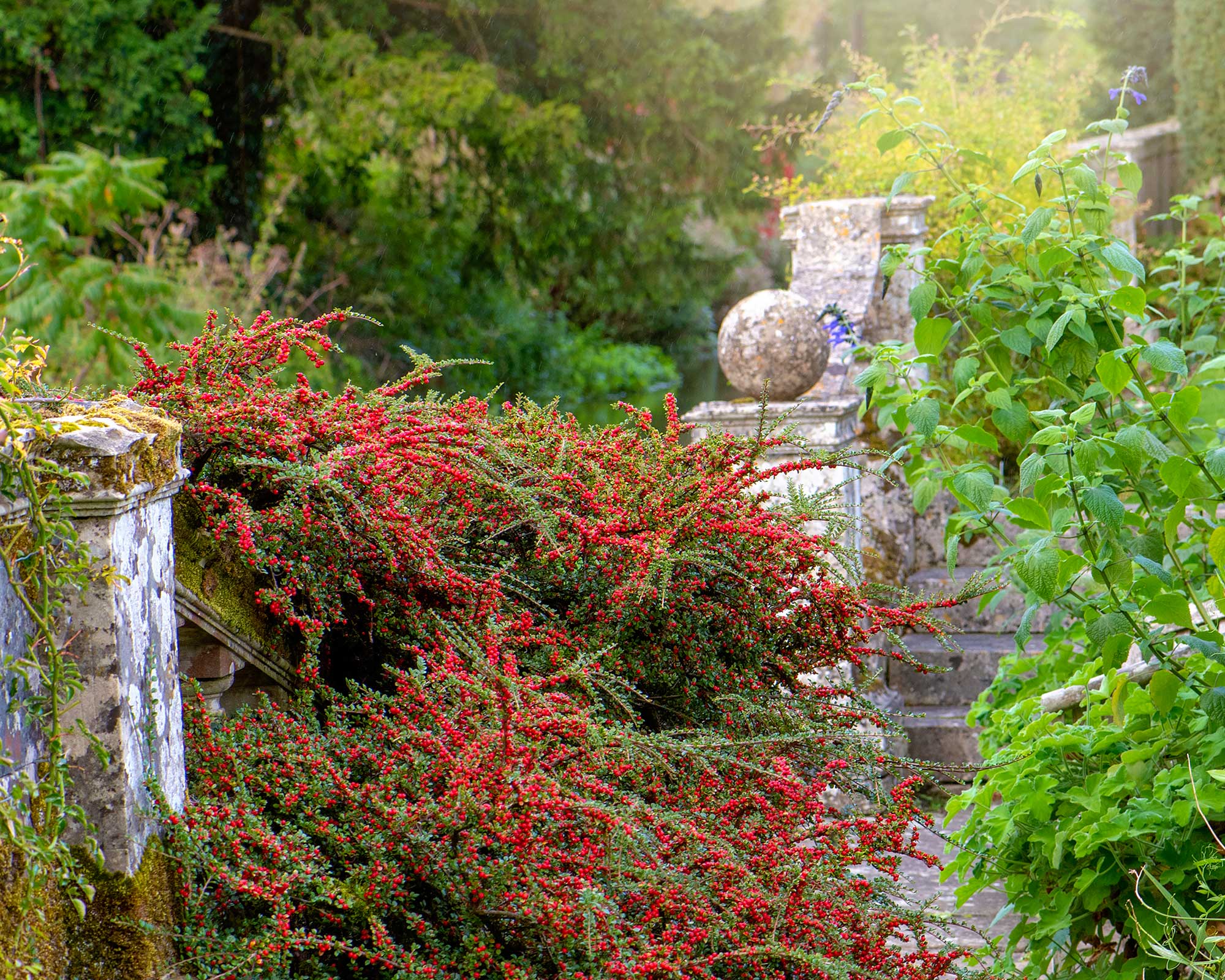
Cotoneasters can add color and interest to a garden wall
Some cotoneasters, especially evergreens, are fast-growing shrubs and soon make good-sized plants that create impact when in flower and dazzle the garden when in full fruit in the fall. ‘Cornubia’ (red berries) and ‘Rothschildianus’ (yellow berries) stand out, but may not be evergreen in cold winters (US below zone 7).
By contrast, many grow more slowly, such as the deciduous Cotoneaster horizontalis (red berries) or ‘Cotoneaster microphyllus (red berries)’ or creep along the ground like ‘Gnom’ (red berries) and ‘Coral Beauty’ (orange berries). Check the descriptions on plant tags and websites carefully before choosing.

Graham Rice is a garden writer who has won awards for his work online, and in books and magazines, on both sides of the Atlantic. He is a member of a number of Royal Horticultural Society committees and the recipient of the 2021 Garden Media Guild Lifetime Achievement Award. He gardened in Pennsylvania for 20 years, but has recently returned to his native England.
